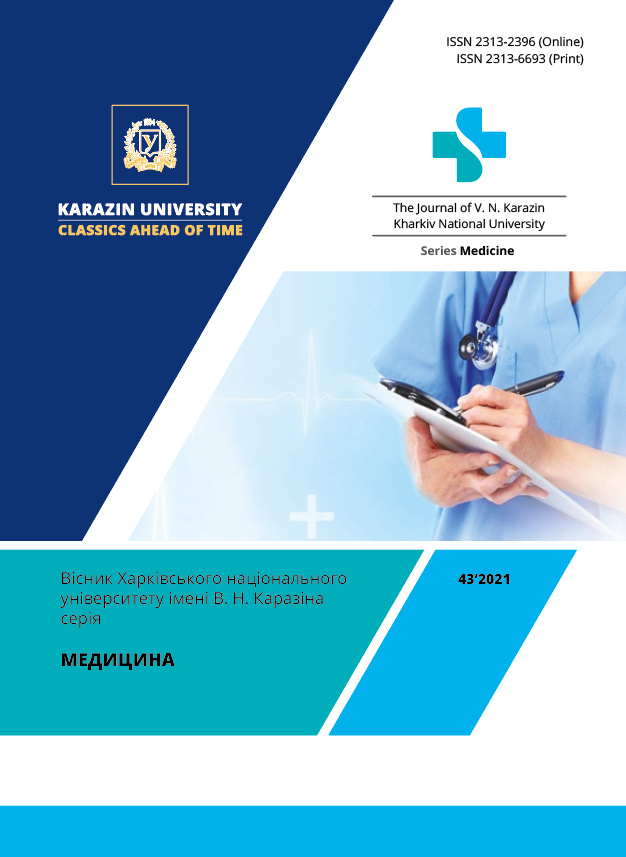Critical results in medical laboratory. management and communication
Abstract
The medical community is gaining increased attention to streamlining a clear mechanism for reporting critical test results in the clinic. DSTU ISO 15189: 2015 requires laboratories to report critical test results to clinitians within a specified period of time. Moreover, they should have a clearly established procedure in place. In order to standardize processes and avoid misunderstandings between stakeholders, international organizations (RCPA, AACB, CLSI) have developed terminology, communication algorithm and requirements for data documentation. In order to harmonize this part, a lot of surveys have been conducted as to which analytes should be included in the notification sheet and, in particular, the limits of their values for hematological, hemostasiological and biochemical studies. According to ICSH recommendations, critical risk results include hemoglobin, leukocytes, neutrophils, platelets, activated partial thromboplastin time (aPTT), prothrombin time (PT) / international normalization ratio (INR) and fibrinogen. The laboratories include different biochemical tests in the alert list. The most common analytes are glucose, potassium, sodium and calcium. It should be noted that this alert list is only recommended for clinical laboratories, such as the number of indicators and alert threshold of analytes should be agreed with the clinicians of a particular medical institution, taking into account their experience and local patient population. The developed recommendations will allow to react as quickly as possible to situations that may threaten patient’s life, provide qualified medical care in a timely manner and adjust work processes in accordance with the requirements of international standards.
Downloads
References
World Health Organization. World Patient Safety Day Goals 2020-21. Who/Uhl/Ihs/20208. 2020. WHO/UHL/IHS/2020.8
Campbell C, Caldwell G, Coates P, Flatman R, Georgiou A, Rita Horvath A, et al. Consensus Statement for the Management and Communication of High Risk Laboratory Results on behalf of the Royal College of Pathologists of Australasia-Australasian Association of Clinical Biochemists Working Party for High Risk Results. PMCID: PMC4745612; PMID: 26900189
Campbell CA, Horvath AR. Harmonization of critical result management in laboratory medicine. Clinica Chimica Acta. 2014; 432: 135–47. Doi: https://doi.org/10.1016/j.cca.2013.11.004
Management and Communication of High Risk Laboratory Results (jointly endorsed by RCPA and AACB). https://www.rcpa.edu.au/getattachment/14432ea0-123b-42d7-882f-8ed87f272886/Consensus-Statement-for-the-Management-and-Communi.aspx
Lam Q, Ajzner E, Campbell CA, Young A. Critical Risk Results – An Update on International Initiatives. EJIFCC. 2016; 27 (1): 66–76. PMID: 27683507; PMCID: PMC4975218
Keng TB, de La Salle B, Bourner G, Merino A, Han JY, Kawai Y, et al. Standardization of haematology critical results management in adults: an International Council for Standardization in Haematology, ICSH, survey and recommendations. International Journal of Laboratory Hematology. 2016; 38 (5): 457–71. PMID: 27426950; Doi: https://doi.org/10.1111/ijlh.12526
Campbell C, Caldwell G, Coates P, Flatman R, Georgiou A, Rita Horvath A, et al. Consensus Statement for the Management and Communication of High Risk Laboratory Results on behalf of the Royal College of Pathologists of Australasia-Australasian Association of Clinical Biochemists Working Party for High Risk Results. 2015; 36 (3):97–105. PMCID: PMC4745612; PMID: 26900189
Gosselin RC, Adcock D, Dorgalaleh A, Favaloro EJ, Lippi G, Pego JM, et al. International Council for Standardization in Haematology Recommendations for Hemostasis Critical Values, Tests, and Reporting. Seminars in thrombosis and hemostasis [Internet]. 2019; 1 (212). Available from: http://www.ncbi.nlm.nih.gov/pubmed/31639855
Pon TK, Mahajan A, Rosenberg A, Amin A, Shah D, Jenkins I, et al. Platelet response to direct thrombin inhibitor or fondaparinux treatment in patients with suspected heparin-induced thrombocytopenia. Journal of Thrombosis and Thrombolysis. 2018 May 1; 45 (4): 536–42. PMID: 29574610; Doi: https://doi.org/10.1007/s11239-018-1646-x
Cuker A, Gimotty PA, Crowther MA, Warkentin TE. Predictive value of the 4Ts scoring system for heparin-induced thrombocytopenia: A systematic review and meta-analysis. Blood. 2012 Nov 15; 120 (20): 4160–7. Doi: https://doi.org/10.1182/blood-2012-07-443051
Estcourt LJ, Stanworth S, Doree C, Trivella M, Hopewell S, Murphy MF, et al. Comparison of different platelet count thresholds to guide administration of prophylactic platelet transfusion for preventing bleeding in patients with haematological disorders after chemotherapy or stem cell transplantation. Cochrane Database of Systematic Reviews. 2014; 2014 (3). PMID: 26576687; PMCID: PMC4717525
Doering TA, Plapp F, Crawford JM. Critical laboratory value thresholds. American Journal of Clinical Pathology. 2014 Nov 1; 142 (5): 617–28. Doi: https://doi.org/10.5935/1676-2444.20160008
Spahn DR, Spahn GH, Stein P. Indications and Risks of Fibrinogen in Surgery and Trauma. Seminars in Thrombosis and Hemostasis. 2015 Dec 30; 42 (2): 147–54. PMID: 26716503; Doi: https://doi.org/10.1055/s-0035-1564841
Adelmann D, Klaus DA, Illievich UM, Krenn CG, Krall C, Kozek-Langenecker S, et al. Fibrinogen but not factor XIII deficiency is associated with bleeding after craniotomy. British Journal of Anaesthesia. 2014 Oct 1; 113 (4): 628–33. PMID: 24871873; Doi: https://doi.org/10.1093/bja/aeu133
Williamson L. The communication of critical and unexpected pathology results. 2016; (October): 1–16. https://www.rcpath.org/uploads/assets/bb86b370-1545-4c5a-b5826a2c431934f5/The-communication-of-critical-and-unexpected-pathology-results.pdf
Kopcinovic LM, Trifunović J, Pavosevic T, Nikolac N. Croatian survey on critical results reporting. Biochemia Medica. 2015; 25 (2): 193–202. Doi: https://doi.org/10.11613/BM.2015.019
Tillman J, Barth JH. A survey of laboratory «critical (alert) limits» in the UK. Annals of Clinical Biochemistry. 2003; 40 (2): 181–4. PMID: 12662409; Doi: https://doi.org/10.1258/000456303763046148
Kost GJ. Table of critical limits. MLO: medical laboratory observer. 2004; 36 (13 Suppl): 6–7. https://www.thefreelibrary.com/Table+of+critical+limits.-a0265023775
Bunton JL, Gaede JT. A study of clinicians’ responses to abnormal laboratory data as a function of diagnostic related group and test classification by College of American Pathologists criteria. American Journal of Clinical Pathology. 1992; 97 (6): 818–26. PMID: 1595602;
The Journal of V. N. Karazin Kharkiv National University, series Medicine has following copyright terms:
- Authors retain copyright and grant the journal right of first publication with the work simultaneously licensed under a Creative Commons Attribution License that allows others to share the work with an acknowledgement of the work’s authorship and initial publication in this journal.
- Authors are able to enter into separate, additional contractual arrangements for the non-exclusive distribution of the journal’s published version of the work, with an acknowledgement of its initial publication in this journal.
- Authors are permitted and encouraged to post their work online prior to and during the submission process, as it can lead to productive exchanges, as well as earlier and greater citation of published work.




